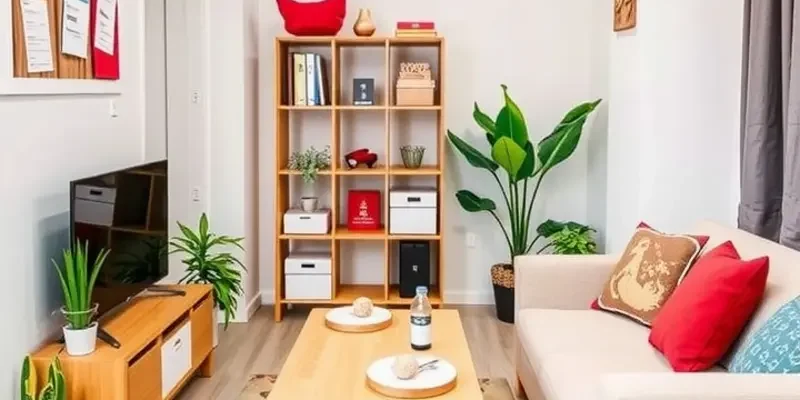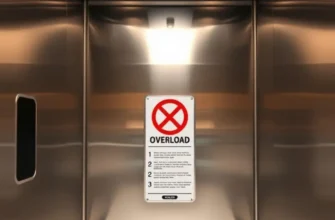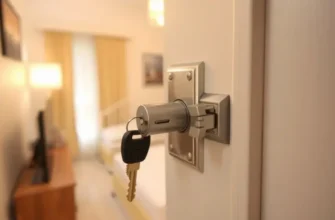Earthquakes can strike suddenly and with little warning, leaving residents in a state of uncertainty and concern. For renters living in apartments, the unique challenges that arise during an earthquake can evoke feelings of vulnerability. Knowing how to prepare your living space is essential for safeguarding both your health and well-being during these seismic events. From securing heavy furniture to understanding your building’s safety measures, there are practical steps you can take to cultivate a more resilient living environment. This guide provides essential tips for renters across the U.S., focusing on maintaining safety, enhancing security, and opting for hassle-free maintenance solutions to keep your apartment secure. With a proactive approach, you can ensure that you and your loved ones are equipped to face an earthquake with confidence.
Securing Your Space: Essential Safety Measures

Earthquakes strike without warning, making preparation essential, especially for apartment dwellers. One critical step in earthquake preparedness is anchoring heavy furniture. Bookshelves, armoires, and large cabinets pose significant risks during tremors, as they can topple easily. Use sturdy, earthquake-rated anchors to affix these items to the walls. Ensure the anchors are screwed directly into wall studs, not just drywall, for maximum stability.
Hanging items such as mirrors, frames, and artwork also require attention. Opt for heavy-duty wall hooks or adhesive products specifically designed for seismic activity. While aesthetically pleasing, ensure that these items won’t become hazards in their own right. A general rule is to avoid placing heavy objects directly over beds or couches, as falling debris can cause severe injuries.
The layout of your apartment plays a role in safety too. Arrange furniture to allow clear pathways for quick exits. Keep the floor clear of clutter to avoid tripping when hastily vacating during a quake. It’s easy to overlook everyday items, such as small plants or decorative objects, but these can become obstacles.
Make your apartment a seismic safe haven by installing latches on cabinets, especially those storing glassware or heavy kitchen items. No one wants to deal with shattered glass on the floor during or after a quake. Childproof latches offer an additional layer of protection without compromising the aesthetics of your kitchen or bathroom.
Check your emergency supplies regularly. Keep essentials like bottled water, non-perishable food, flashlights, and a first-aid kit readily available. An emergency backpack is advisable, stored in an easily accessible place. Remember to tailor your kit to personal needs, including medications or special dietary requirements. For more tips on organizing your apartment and utilizing storage solutions, check out our guide.
Communication is vital during emergency situations. Ensure your phone and backup battery devices are kept charged. Familiarize yourself with neighbors and establish a plan for supporting one another. Knowing who might need extra assistance, such as elderly or disabled tenants, is crucial.
Although modifying your rental to better withstand earthquakes can seem daunting, some changes are minor yet impactful. If you’re uncertain about specific measures or need rental-friendly solutions, consult your building’s management for advice on permissible modifications. Many property managers have resources or can recommend trusted contractors.
Finally, practice earthquake drills. Familiarize yourself with the most secure places in your apartment, such as under sturdy tables or door frames. Knowing where to go instinctively during a quake can drastically reduce panic and enhance safety. When seconds count, being prepared can make a difference.
Creating an Emergency Plan: Be Ready When It Happens

Developing a comprehensive emergency plan can significantly enhance your safety and preparedness in the event of an earthquake. As a renter, understanding your building’s layout and having a clear exit strategy is essential. Begin by identifying all possible exits in your apartment complex. Take time to locate stairwells and note which exits are nearest to you. Avoid elevators during an earthquake, as they can become inoperable or unsafe.
Establish a clear communication route with your roommates or family. Designate roles for each person to ensure everyone knows how to assist each other. Establish a communication chain to be followed in case you get separated. Agree on simple but effective methods of notifying each other of your status, whether through a quick text or a prearranged phone call.
Identifying a safe meeting point outside your apartment building is crucial. The designated spot should be far enough from the building to avoid any falling debris. Make sure everyone in your household knows where to meet in case you have to evacuate quickly. Practicing this drill regularly will help ensure everyone reacts promptly.
Regular drills are an essential part of being prepared. Test different scenarios, such as evacuations during different times of the day, to identify any potential issues. This will also help your household members become familiar with how to handle a real emergency.
In addition to drills, it’s vital to maintain and frequently check an emergency kit. This kit should include essentials like water, non-perishable food, a flashlight, batteries, essential medications, and first aid supplies. Ensure everyone knows where it is stored and how to access it quickly.
Check-ins for your emergency kit should be scheduled regularly. Use reminders based on significant dates, such as the start of a new season, for routine assessments. Replace expired items and update the kit according to any changes in personal needs or household composition.
In the context of broader preparedness, developing a thorough understanding of your area’s safety guidelines is beneficial. For instance, safety measures can vary significantly based on geographical risks and building codes. Access resources such as local safety guides and renter advisory boards. A curated local guide such as this one can offer insights into the safety features of specific areas.
Ensuring that all members of your household are aware of the emergency plan will bolster confidence during a crisis. Building situational awareness can mitigate panic and enable a level-headed response to tremors. Make this plan as inclusive and thorough as possible, and you’ll find peace of mind even amidst uncertainty.
Final words
Safety and preparedness should never be underestimated, especially in an apartment setting where structural nuances can amplify risks. By securing your space and creating a solid emergency plan, you ensure that both you and your apartment are ready for any seismic threat. The combination of a proactive mindset and straightforward actions can significantly enhance your sense of security and calmness during an earthquake. As you implement these measures, remember that knowledge is power; empower yourself and your neighbors by sharing insights and experiences for a safer living environment.









